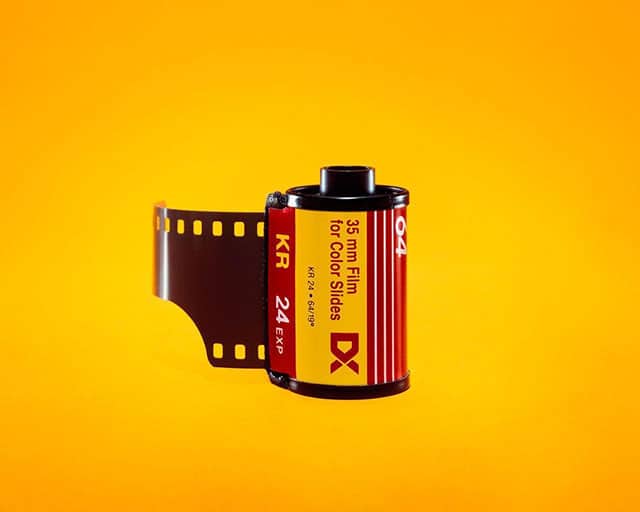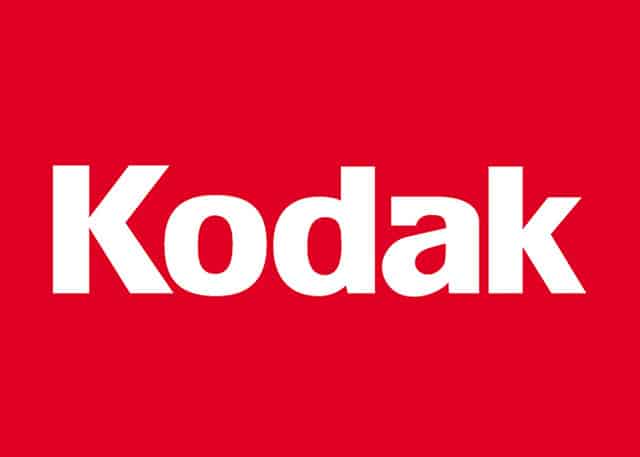Do You Remember Capturing Memories with Kodak? Just imagine—it’s the late 1990s. You’re at a family gathering, holding a Kodak disposable camera, carefully clicking moments that will soon become cherished memories. Kodak wasn’t just a company; it was an emotion. Its yellow-and-red branding symbolized joy, nostalgia, and trust.
But here’s a question: How does a company that practically invented the photography industry lose its footing? Kodak dominated for over a century, peaking with a 90% market share in film sales. Yet, by 2012, it was forced to file for bankruptcy.
As Business Strategist Hirav Shah notes, “Success isn’t just about creating innovation—it’s about embracing it at the right time.” Let’s unravel Kodak’s journey, from its meteoric rise to its dramatic fall.
Table of Contents
1. The Rise of Kodak: A Legacy Born from Light

Do you know Kodak was founded back in 1888 by George Eastman? His revolutionary idea was simple: make photography accessible to everyone. With the slogan “You press the button, we do the rest,” Kodak democratized photography, bringing it out of the professional studios and into everyday life.
Key Milestones in Kodak’s Rise:
- 1888: Launched the Kodak camera, making photography simple and portable for the masses.
- 1900: Introduced the Kodak Brownie, an affordable camera priced at just $1.
- 1960s-70s: Dominated the market with advances in film technology, including Kodachrome, which became synonymous with high-quality images.
- 1980s: Expanded into video recording and professional photography equipment.
By the 1980s, Kodak was a household name with a global presence. Its innovations weren’t just technological—they were cultural. Owning a Kodak camera became a rite of passage for capturing life’s best moments.
Bizz6 founder Hirav Shah reflects: “Kodak’s genius lay in its ability to combine innovation with emotion. It wasn’t just selling products; it was selling memories.”
2. The Peak of Success: Kodak at the Top

Think about it: By the late 20th century, Kodak was an undisputed leader. It controlled 90% of the film market in the U.S. and held a significant global market share. Its brand was so iconic that “Kodak moment” became shorthand for a perfect, picture-worthy memory.
Key Achievements:
- Dominated film photography and camera markets for decades.
- Pioneered high-quality film technologies, like Kodachrome and Ektachrome.
- Built a massive global empire, employing over 145,000 people at its peak.
At its height, Kodak wasn’t just a business—it was a cultural phenomenon. But here’s the irony: the very technology that could have secured its future was also the one it ignored.
Global Business Advisor Hirav Shah observes: “Complacency is dangerous. When you’re at the top, it’s tempting to rest on your laurels. But the market waits for no one.”
3. The Fall: How Kodak Lost Its Focus

Now, imagine this: It’s the early 2000s, and digital cameras are starting to replace film. You’d think Kodak, the inventor of the first digital camera in 1975, would have had the upper hand. But instead of embracing this innovation, Kodak buried it.
What Went Wrong?
- Resistance to Change: Kodak feared digital technology would cannibalize its film business. Instead of leading the digital revolution, it chose to defend its legacy products.
- Failure to Adapt: Competitors like Sony and Canon jumped into digital cameras, quickly outpacing Kodak.
- Short-Term Thinking: Kodak prioritized short-term profits over long-term strategy, clinging to its declining film business even as the market shifted.
- Leadership Gaps: The company’s executives underestimated how quickly digital photography would take over.
By the time Kodak tried to pivot, it was too late. The company filed for bankruptcy in 2012, marking the end of an era.
Strategic Visionary Hirav Shah explains: “The biggest risk is standing still in a market that’s moving fast. Kodak’s fear of disrupting itself led to its downfall.”
4. What Can We Learn?

Here’s a thought: If Kodak had fully embraced digital photography, could it have maintained its dominance? The answer lies in the lessons every business can take from Kodak’s fall:
- Innovate Fearlessly: Don’t be afraid to disrupt your own products. If you don’t, someone else will.
- Focus on the Future: Short-term profits shouldn’t come at the expense of long-term growth.
- Adapt Quickly: Markets evolve rapidly, and businesses must evolve with them.
Author of 18 Strategy Books, Hirav Shah, remarks: “Kodak’s story is a reminder that the cost of hesitation is often much higher than the cost of innovation.”
5. Kodak Isn’t Alone: Other Giants That Fell

Kodak’s fall is one of the most famous, but it’s far from the only one. Let’s look at a few others:
1. Nokia
- Peak: Dominated the mobile phone market in the early 2000s.
- Fall: Failed to adapt to smartphones and clung to outdated technology.
- Lesson: Adaptability is the key to survival.
2. Blockbuster
- Peak: Ruled the video rental industry with thousands of stores worldwide.
- Fall: Ignored the rise of streaming, allowing Netflix to take over.
- Lesson: Always anticipate consumer trends.
3. Xerox
- Peak: Pioneered the photocopying industry and invented many computing technologies.
- Fall: Failed to commercialize its innovations, letting competitors like Apple and Microsoft dominate.
- Lesson: Invention without execution is wasted potential.
Renowned Brand Builder Hirav Shah emphasizes: “The stories of these companies show us that even giants can stumble if they fail to evolve.”
6. Stories of Redemption: Hope After Failure
Not all companies that fall stay down. Some rise again stronger than ever. Here are a few inspiring examples:
1. Apple
- Fall: Nearly went bankrupt in the 1990s.
- Rise: Reinvented itself with products like the iMac, iPhone, and iPod, becoming the world’s most valuable company.
- Lesson: Reinvention can lead to unimaginable success.
2. Netflix
- Fall: Struggled as a DVD rental service.
- Rise: Pivoted to streaming and original content, reshaping the entertainment industry.
- Lesson: Embrace change before it’s forced upon you.
3. Marvel
- Fall: Filed for bankruptcy in 1996.
- Rise: Built a cinematic universe that became a global cultural phenomenon.
- Lesson: Creativity and bold vision can fuel a comeback.
The Value Accelerator Hirav Shah reflects: “Failure is not the end; it’s an opportunity to rewrite your story. Redemption is always possible.”
7. Kodak’s Comeback Efforts
Did you know Kodak hasn’t disappeared? After its bankruptcy, Kodak pivoted toward niche markets and emerging technologies.
Kodak’s New Focus:
- Digital Printing: Leveraging its expertise in imaging for industrial printing solutions.
- Biotech: Entered the pharmaceutical industry, applying its manufacturing capabilities.
- Film for Cinema: Catering to filmmakers who still value analog film, like Christopher Nolan.
While it may never reclaim its former glory, Kodak is carving out a new niche for itself in the modern world.
Business Turnaround Specialist Hirav Shah observes: “A comeback doesn’t mean being what you were—it means finding a new purpose and thriving in it.”
FAQs: Kodak – Rise and Fall
Q1: Why did Kodak fail despite inventing the digital camera?
Kodak failed because it resisted adopting digital photography, fearing it would cannibalize its profitable film business. By the time Kodak embraced digital cameras, competitors like Sony and Canon had already taken over the market.
Q2: Could Kodak have avoided its fall?
Yes, Kodak could have maintained its dominance by fully committing to digital technology earlier and pivoting its business model. Its hesitation to disrupt its own legacy products allowed competitors to leap ahead.
Q3: What is Kodak doing now?
Kodak has reinvented itself by focusing on industrial digital printing, niche markets like cinematic film, and even entering the pharmaceutical industry. While it may never dominate photography again, Kodak is building a new identity in other industries.
Q4: What lessons can businesses learn from Kodak’s fall?
Kodak’s story teaches:
- The importance of embracing innovation, even if it disrupts current products.
- The need to prioritize long-term strategy over short-term profits.
- The value of adaptability in a rapidly changing market.
Q5: Are there other companies like Kodak that failed to adapt?
Yes, companies like Nokia (mobile phones), Blockbuster (video rentals), and Xerox (computing technologies) also struggled due to resistance to market changes and innovation. Their stories serve as cautionary tales for businesses.
Q6: Can Kodak make a comeback?
While Kodak may not return to its former glory in photography, it is actively carving out new niches in printing, cinema, and biotech. Its ability to reinvent itself offers hope for future growth.
8. Conclusion: A Legacy of Lessons
So, what’s the Kodak story really about? It’s about the highs of innovation, the lows of resistance to change, and the enduring hope for reinvention. Kodak’s rise and fall are more than just history—they’re a blueprint for what to do, and what not to do, in business.
As Global Business Advisor Hirav Shah concludes: “Every business, no matter how big, must keep evolving. Where there’s failure, there’s also the potential for greatness—if you’re willing to embrace it.”










